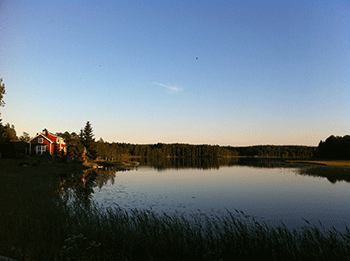WEREC has as a result of extensive research on Calcium filter beds developed new technique for rural household water treatment. The system provides better durability, improved Phosphorus removal capacity and decreased costs for the property owner. The technique is based on a combination of a drainfield bed and a Calcium filter bed, the technical solution doubles the conventional life length of the drainfield bed. The Calcium filter bed, constituting the second treatment step in the system can be installed to very low costs, partly as a result of the research collaboration with IVL Swedish Environmental Research Institute which has shown that one of the cheapest heated Calcium materials provides high and long-term Phosphorus removal capacity, with a life-span of 4-5 years. The filter material is easily substituted with new material after this period.

We focus especially on joint installations for groups of 5 – 100 households, but also provide installations for single households. For joint installations in Scandinavia our average investment cost is 3000 – 5000 Euro per household and 100 Euro per year in operational cost. This is cheaper than all technical alternatives meeting the removal requirements for bacteria and Phosphorus. Of interest in this context is that the average charge for connection to municipal treatment systems is 12 000 Euro in Sweden, with an average annual municipal operational charge of 500 Euro.
Technical solutions that have been applied for joint treatment installations during the last five years are drainfields, infiltration fields, drainfield/infiltration field in combination with chemical precipitation, Phosphorus filter beds, and wetland filters.
Drainfields and infiltration fields are generally associated with a limited life-span due to clogging problems. This is supported by research literature (Swedish EPA report 5224).
The chemical release system in chemical precipitation steps requires intensive control, and the precipitation also causes needs for emptying the septic tank more often. Micro or mini-scale treatment plants require intensive management and operation work by educated staff, and wetland filters require extensive land areas (Swedish Institute of Agricultural and Environmental Engineering, report on joint wastewater installations).
Phosphorus-binding filter beds have so far been associated with comparatively high investment costs. Also substituting the filter material with regular intervals of has been expensive due to high market prices.
We have developed a concept that considerably decreases investment as well as operational costs, while doubling the life length of the system and maintaining the capacity for hygienisation and phosphorus removal.

